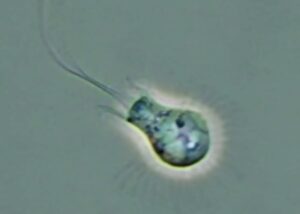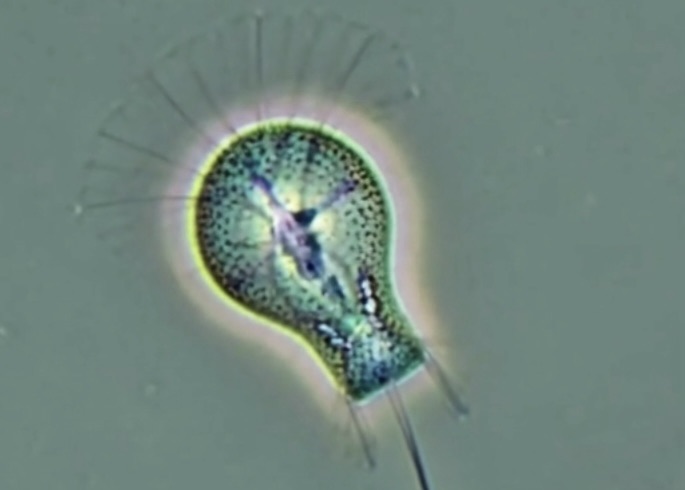This article explores the search for the first animal, or the common ancestor of all animals that lived over 600 million years ago. It covers the earliest evidence of life, the first animals, and the rise of multicellular organisms. The search for the first animal remains an exciting and challenging area of scientific research.
The Origins of Life
The origins of life on Earth remain one of the most fascinating and enduring mysteries in science. How did life first arise from the inanimate matter of the early Earth, and what were the first living organisms like? These are questions that scientists have been grappling with for centuries, and the search for answers continues to this day.
One key area of inquiry is the search for the first animal, or the common ancestor of all animals that lived over 600 million years ago. In this article, we will explore the latest research and thinking on this topic, from the earliest evidence of life to the emergence of complex, multicellular organisms.
The Earliest Evidence of Life
The earliest evidence of life on Earth dates back to over 3.5 billion years ago, during the Archean Eon. The first living organisms were likely simple, single-celled organisms such as bacteria and archaea, which thrived in the harsh, primitive conditions of the early Earth.
These early organisms were able to survive by utilizing the energy from sunlight, or by consuming simple organic molecules such as methane or ammonia. Over time, they evolved to become more efficient at harnessing energy and replicating themselves, leading to the emergence of more complex organisms.
The First Animals
The first animal, or the common ancestor of all animals, is believed to have lived during the Ediacaran period of the Precambrian era, over 600 million years ago. However, the exact identity of this animal and what it looked like is still uncertain, and the subject of ongoing scientific debate.
One leading hypothesis is that the first animal was a simple, single-celled organism similar to modern-day choanoflagellates, a type of aquatic microbe that is thought to be a close relative of animals. These organisms are characterized by a distinctive collar-like structure that helps them capture food particles, and may have been a precursor to the more complex feeding structures found in animals.
However, there is also fossil evidence of more complex, multicellular organisms from the same time period, such as the Ediacaran biota. These organisms were characterized by complex body plans and structures that suggest they were more advanced than choanoflagellates, and may have included the first animals.
The Rise of Multicellular Organisms
Regardless of the identity of the first animal, it is clear that the emergence of multicellular organisms was a key turning point in the history of life on Earth. Multicellularity allowed organisms to become larger and more complex, and opened up new ecological niches that were previously inaccessible to single-celled organisms.
The earliest multicellular organisms were likely simple colonies of cells that worked together to achieve a common goal, such as feeding or reproduction. Over time, these colonies evolved to become more integrated and specialized, leading to the emergence of the first true tissues and organs.
One of the most important evolutionary innovations of multicellular organisms was sexual reproduction, which allowed for greater genetic diversity and facilitated the evolution of new traits and adaptations. Sexual reproduction likely first evolved in simple, colonial organisms before being adopted by more complex animals.
Conclusion
The search for the first animal, and the origins of life more broadly, remain one of the most exciting and challenging areas of scientific research. While much progress has been made in recent decades, there is still much that we do not know about how life first arose on Earth, and what the earliest living organisms were like.
However, by continuing to study the molecular, genetic, and fossil evidence, scientists are slowly piecing together the puzzle of the origins of life. And with each new discovery, we come closer to understanding the fundamental processes that gave rise to the incredible diversity of life that exists on our planet today.

Words Worth Noting
Origins of Life, Life on Earth, Earliest Organisms, Single Cell, Multicellular, First Animals, Ediacaran Biota, Fossil Evidence, Molecular Evidence, Genetic Research, Evolutionary Biology, Darwinism, Complex Organisms, Sexual Reproduction, Ecological Niche, Genetic Diversity, Adaptation, Colonial Organisms, Precambrian Era, Archean Eon, Bacteria, Archaea, Choanoflagellates, Multicellularity, Tissues and Organs, Emergence of Life, Scientific Research, Mysteries of Life.
Hashtags For Social Media
#OriginsOfLife #LifeOnEarth #EarliestOrganisms #SingleCell #Multicellular #FirstAnimals #EdiacaranBiota #FossilEvidence #MolecularEvidence #GeneticResearch #EvolutionaryBiology #Darwinism #ComplexOrganisms #SexualReproduction #EcologicalNiche #GeneticDiversity #Adaptation #ColonialOrganisms #PrecambrianEra #ArcheanEon #Bacteria #Archaea #Choanoflagellates #Multicellularity #TissuesAndOrgans #EmergenceOfLife #ScientificResearch #MysteriesOfLife






